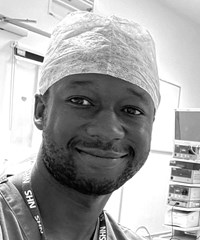ENT features archive for November 2025
Management of olfactory dysfunction
An evidence-based update on olfactory dysfunction: who to image, how to test and what works – OT, CRS surgery, biologics and PRP. Olfactory dysfunction (OD) is highly prevalent, affecting more than 20% of the adult population with a clear age-related...
Current practice in cochlear implantation
From candidacy to surgery and rehabilitation, cochlear implant practice is evolving, with new technologies shaping outcomes for patients worldwide. Image courtesy of MED-EL. Cochlear implants restore a sense of hearing in the profoundly deaf, representing the most successful neuroprostheses available,...
Navigation in skull base surgery
Advances in navigation and augmented reality are transforming skull base surgery, offering greater precision and safety alongside emerging robotic tools. Surgical robots have been used in various forms across several surgical specialties for over 20 years [1,2]. However, it is...
Challenges in paediatric airway management
Paediatric airway emergencies are high-stakes, but training, simulation and updated guidelines help ENT teams manage risks and build confidence. Congratulations to the ENT Masterclass® on its forthcoming 20th birthday. Over the past two decades, Shahed Quraishi has grown it to...
Advances in laryngeal surgery
We are seeing many advances in laryngology: from the lab, from equipment manufacturers and from developments in surgical techniques. The field of laryngology has been under constant change in recent years, with the introduction of new technologies and research. The...
Underdiagnosing eosinophilic oesophagitis in food bolus obstruction: a wake-up call for ENT units
The management of FBO has evolved, with most cases now done by upper GI clinicians. Biopsies should be taken routinely to investigate possible eosinophilic oesophagitis. In acute soft food bolus obstruction (FBO), uncovering the root cause is as crucial as...














